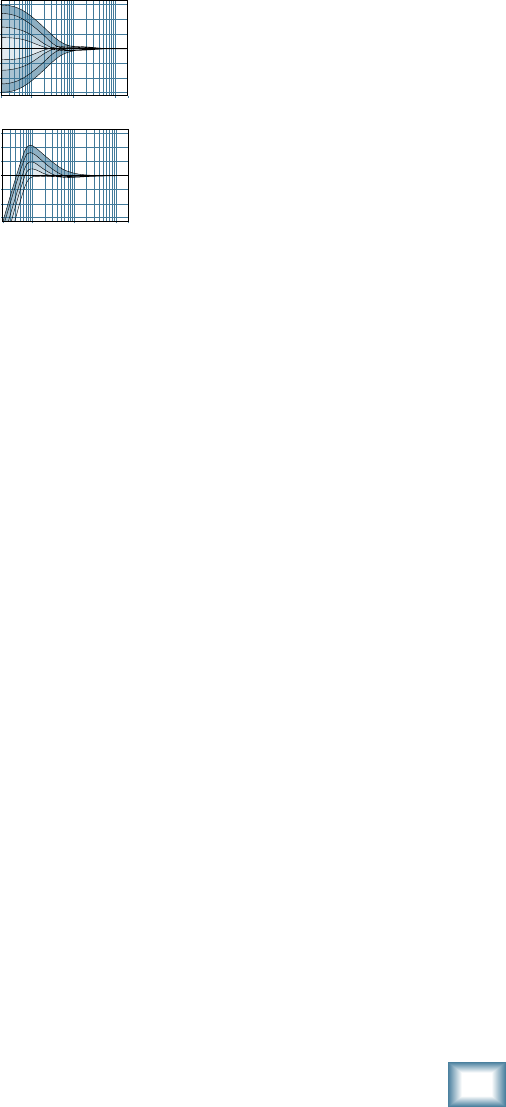
1
Owner’s Manual
Owner’s Manual
range represents
the punch in bass
drums, bass guitar,
fat synth patches,
and some really seri-
ous male singers.
Used in conjunc-
tion with the low
cut [5] switch, you
can boost the low
EQ without injecting
a ton of subsonic
debris into the mix.
10. STEREO PAN SWITCH (Ch. 1–2)
With this switch out, each mono channel
feeds both the left and right sides of the
main mix equally. For example:
• Playing a mono source: If you talk into
a microphone connected to input 1,
your sweet tones will be heard in both
the left and right loudspeakers.
• Overdubbing a mono source: if you
are monitoring directly through the
headphones, you can hear the overdub
signal in both ears while you are play-
ing.
With this switch pressed in, channel 1 will
play only in the left side of the main mix,
and channel 2 will play in the right side. For
example:
• Recording a stereo source: If you have
a stereo microphone connected to
the mic inputs, or if you are playing a
stereo source into the line inputs, each
side of the source can be recorded
discretely onto a recorder connected to
the main or tape outputs.
The pan switch does not affect channels 3
or 4, or the tape inputs.
11. LEVEL
This adjusts the channel’s level from off,
to unity gain at the center, on up to 12 dB of
additional gain. Once the gain [7] has been
adjusted for each channel, use the level to
adjust how much of each channel appears in
the main mix.
Channels 1 and 2 use mono level controls,
and channels 3 and 4 uses a stereo control.
20
Hz
100
Hz
1k
Hz
10k
Hz
20k
Hz
–15
–10
–5
0
+5
+10
+15
20
Hz
100
Hz
1k
Hz
10k
Hz
20k
Hz
–15
–10
–5
0
+5
+10
+15
Low EQ with Low Cut
Low EQ
12. OL LED
This overload LED will come on if the
input signal is too high. The signal level is
measured just before the level control, but
after the gain control and EQ.
If the OL LED does come on, turn down
the gain and/or the EQ controls until this
will only come on occasionally when the
input source is running high. Turning the
level control will not affect the OL LED.
13. MAIN OUTS
These outputs feed the main mix out into
the waiting world. They can be connected
to the line-level inputs of power amplifiers,
powered speakers, or to the line inputs of
another mixer.
To use these outputs to drive balanced
inputs, connect 1⁄4" TRS (Tip–Ring–Sleeve)
phone plugs like this:
Tip = + (hot)
Ring = –(cold)
Sleeve = Ground
For most music recording and PA ap-
plications, unbalanced lines are fine. To
drive unbalanced inputs, connect 1⁄4" TS
(Tip–Sleeve) phone plugs like this:
Tip = + (hot)
Sleeve = Ground
14. STEREO LINE INPUTS (Ch.3–4)
These fully-balanced inputs are designed
for stereo or mono, balanced or unbalanced
signals. They can be used with just about any
professional or semi-pro instrument, effect
or tape player.
Signals entering channel 3 are added to
the left side of the main mix only. Signals
entering channel 4 are added to the right.
When connecting a mono device, always
use the left (mono) input (ch. 3) and plug
nothing into the right input (ch. 4)— this
way the signal will appear on both sides. This
trick is called “jack normalling.”


















